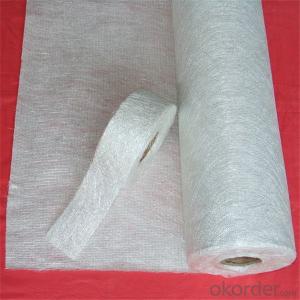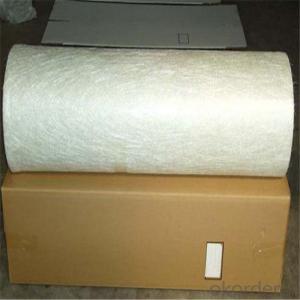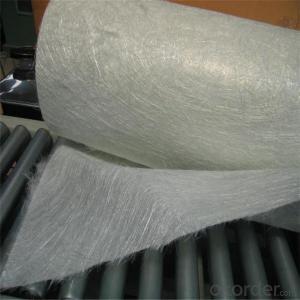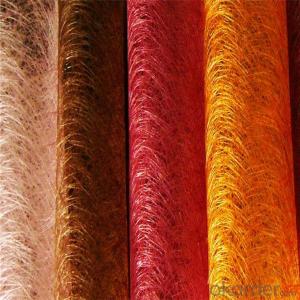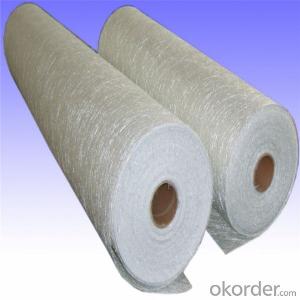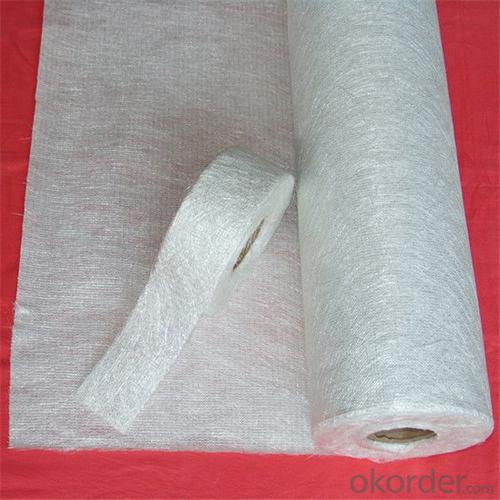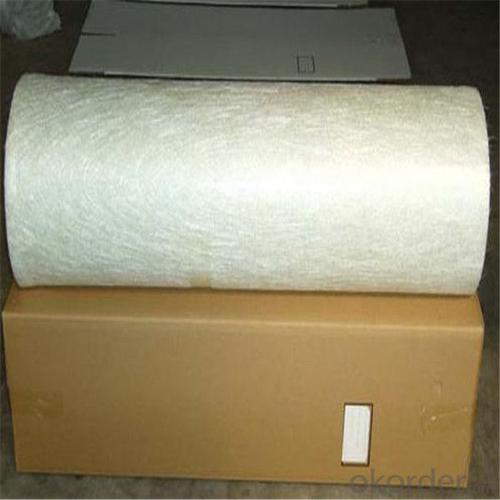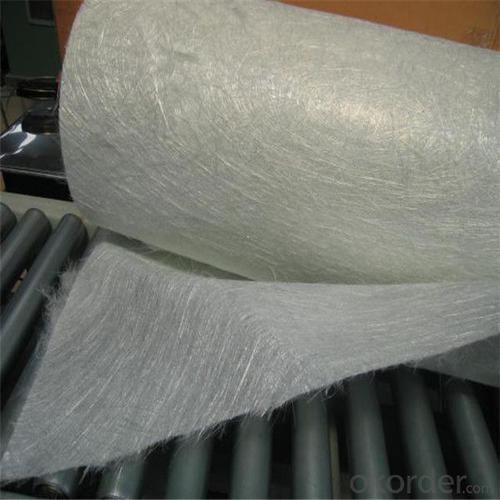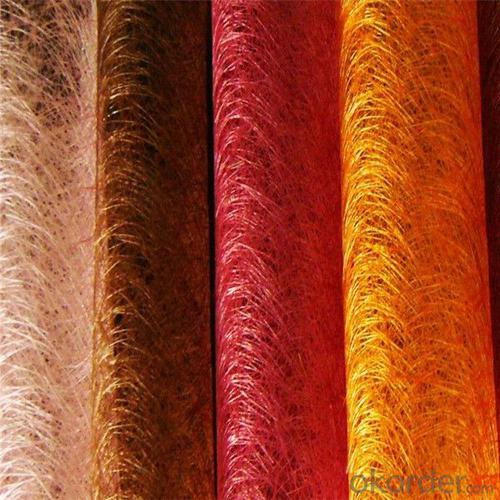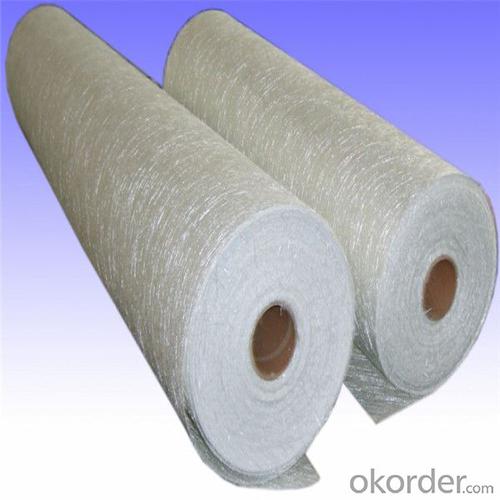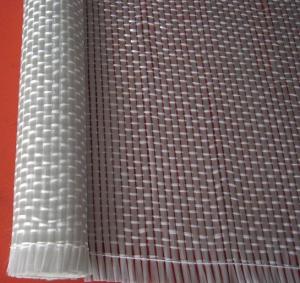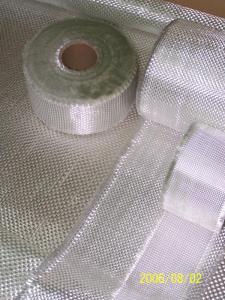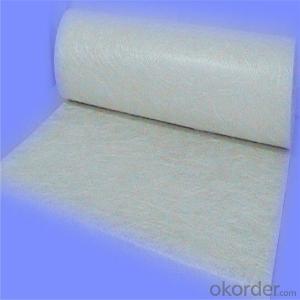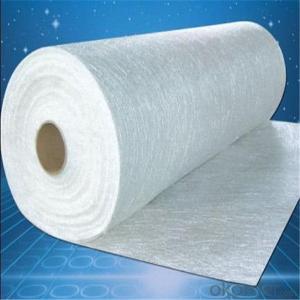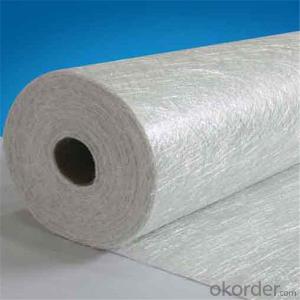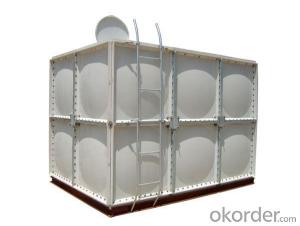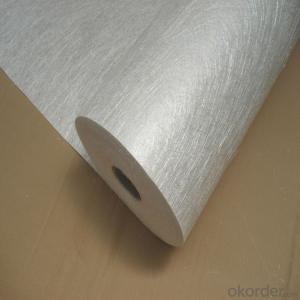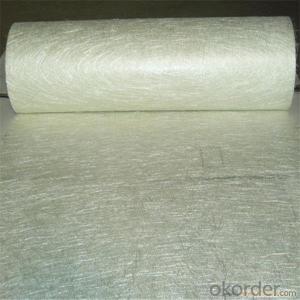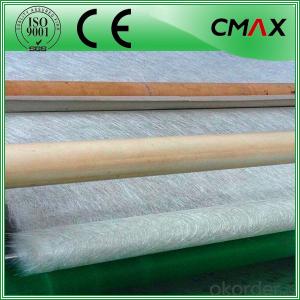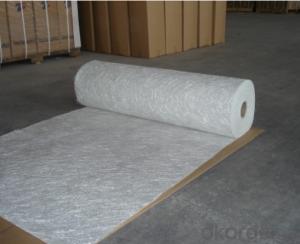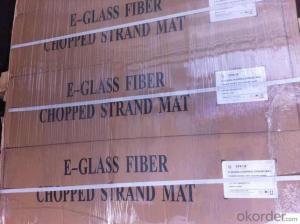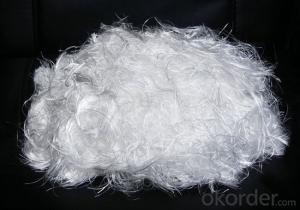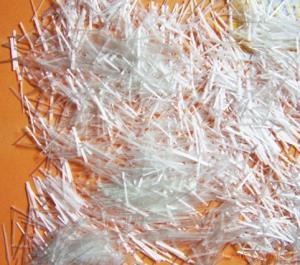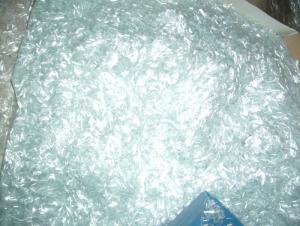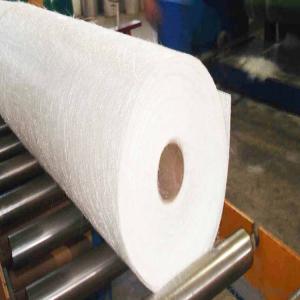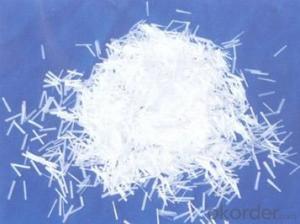Fiberglass Chopped Strand Mat Powder for Boats
- Loading Port:
- Tianjin
- Payment Terms:
- TT OR LC
- Min Order Qty:
- 100 m.t.
- Supply Capability:
- 100000 m.t./month
OKorder Service Pledge
OKorder Financial Service
You Might Also Like
Quick Details
| Technique: | Chopped Strand Fiberglass Mat (CSM) | Dimensions: | 225g/m2-900g/m2 | Fiberglass Type: | E-Glass |
| Place of Origin: | China (Mainland) | Brand Name: | cnbm | Model Number: | 300G-900G |
| moisture: | ≤0.2% | combustion content: | 2.1-6.3% | binder type: | emulsion or powder |
| width: | 1040,1270,2080mm |
Packaging & Delivery
| Packaging Details: | plastic bag then carton then pallet |
| Delivery Detail: | 15 days after payment |
Advantage
1. Chopped strand mat is made up from fiberglass chopped strands bonded with powder binder or emulsion binder
2. Wet out faster and easy of handling
3. Good choppability
4.thickness uniformity
Apllication
fiberglass chopped strand mat
It is used for processing and manufacturing FRP products with getting through hand lay up process, filament winding process and press molding. Typical products is including bathroom accessories, pipe, building material, automobile, furniture, vessel, cooling towers and other FRP products
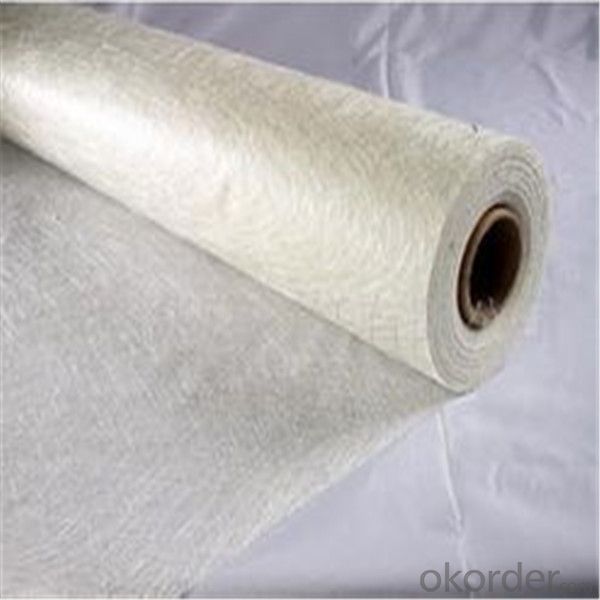
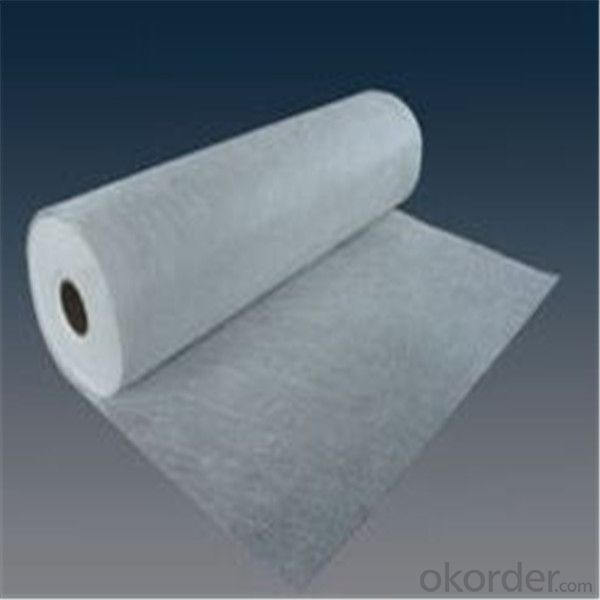
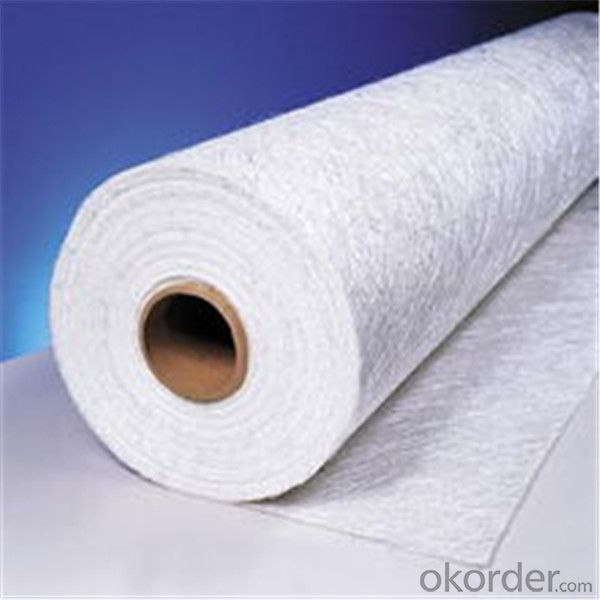
- Q: How does the fiber length affect the performance of fiberglass chopped strand?
- The fiber length of fiberglass chopped strand directly affects its performance. Longer fiber lengths provide increased tensile strength and stiffness, resulting in improved mechanical properties of the final product. Shorter fiber lengths, on the other hand, enhance the dispersion and flowability of the chopped strand, making it easier to process and mold. Therefore, selecting the appropriate fiber length is crucial in achieving the desired performance and processing characteristics of fiberglass chopped strand.
- Q: How does the UV resistance of fiberglass chopped strand compare to other reinforcing materials?
- The UV resistance of fiberglass chopped strand is generally considered to be superior compared to other reinforcing materials. Fiberglass is inherently resistant to UV radiation and does not degrade or weaken when exposed to sunlight for prolonged periods. Other materials like carbon fiber or aramid fibers may require additional protective coatings or treatments to maintain their UV resistance.
- Q: Is fiberglass chopped strand resistant to UV radiation?
- Yes, fiberglass chopped strand is generally resistant to UV radiation. The resin used in fiberglass production is typically formulated to withstand exposure to sunlight and other environmental factors, including UV radiation. However, the level of UV resistance can vary depending on the specific type of resin used and the manufacturing process. In some cases, additional protective coatings or treatments may be applied to enhance the UV resistance of fiberglass chopped strand. It is always advisable to consult the manufacturer's specifications or technical data sheets to determine the exact UV resistance of a specific fiberglass product.
- Q: Can fiberglass chopped strand be used in the production of sporting goods?
- Yes, fiberglass chopped strand can be used in the production of sporting goods. Fiberglass chopped strand is a versatile material that offers several benefits for the manufacturing of sporting goods. It is lightweight, strong, and has excellent tensile strength, making it ideal for applications that require durability and high performance. In sporting goods production, fiberglass chopped strand is commonly used in the construction of various components such as hockey sticks, tennis rackets, golf clubs, and bicycle frames. Its high strength-to-weight ratio allows for the creation of lightweight yet robust products, enhancing the performance of athletes. Fiberglass chopped strand is also resistant to corrosion, which is beneficial for sporting goods that are exposed to moisture or outdoor elements. Furthermore, fiberglass chopped strand can be easily molded into different shapes and sizes, allowing for the production of complex designs and custom-made sporting goods. Its flexibility and ability to bond well with different resins make it an ideal material for creating composite structures that are strong and durable. Overall, fiberglass chopped strand is a suitable material for the production of sporting goods due to its lightweight, strength, durability, corrosion resistance, and versatility in manufacturing processes.
- Q: What are the typical testing standards for fiberglass chopped strand composites?
- The typical testing standards for fiberglass chopped strand composites involve various mechanical, physical, and chemical tests to ensure their quality and performance. Some of the commonly used testing standards for fiberglass chopped strand composites include: 1. Tensile Strength Testing: This test measures the maximum amount of tensile stress a composite can withstand before breaking. It helps determine the material's strength and ability to withstand pulling forces. 2. Flexural Strength Testing: This test evaluates the material's resistance to bending or flexing. It provides insights into the composite's structural integrity and its ability to withstand external loads. 3. Impact Resistance Testing: This test assesses the material's ability to absorb and resist sudden impacts or shocks. It helps evaluate the composite's durability and resistance to damage. 4. Water Absorption Testing: This test measures the amount of water absorbed by the composite over a specific period. It helps determine the material's resistance to moisture and potential degradation. 5. Fire Resistance Testing: This test evaluates the composite's reaction to fire and its ability to resist burning or spread of flames. It is crucial for applications where fire safety is a concern. 6. Chemical Resistance Testing: This test assesses the composite's resistance to various chemicals, such as acids, alkalis, and solvents. It helps determine the material's compatibility with different environments and potential chemical exposures. 7. Thermal Conductivity Testing: This test measures the composite's ability to conduct heat. It helps assess its thermal insulation properties and suitability for applications where heat transfer is a concern. 8. Dimensional Stability Testing: This test evaluates the composite's ability to maintain its shape and size under different temperature and humidity conditions. It helps determine the material's stability and suitability for specific applications. These are some of the typical testing standards for fiberglass chopped strand composites. However, it is important to note that specific industries or applications may have additional or specialized testing requirements to meet their specific needs and standards.
- Q: How does the creep resistance of the chopped strand affect its performance?
- The performance of chopped strand is directly affected by its creep resistance, which is a critical factor. Creep refers to the gradual deformation of a material under constant load over time. In the case of chopped strand, its ability to resist this deformation and maintain its shape and structural integrity is what we refer to as creep resistance. Having a high creep resistance in chopped strand is highly desirable because it guarantees that the material will not undergo excessive deformation or failure when subjected to long-term or sustained loads. This is particularly crucial in applications where chopped strand is used as reinforcement in composites or structural components. When a material has poor creep resistance, it can undergo significant dimensional changes, such as elongation or shrinkage, over time. This can result in a loss of strength, stiffness, and overall performance of both the chopped strand and the final product it is incorporated into. On the other hand, chopped strand with good creep resistance will maintain its shape and dimensions even under prolonged stress. This ensures the structural integrity and longevity of the composite or component. It also provides better load-bearing capabilities and resistance to fatigue or failure caused by repetitive or cyclic loading. In conclusion, the creep resistance of chopped strand plays a crucial role in its performance as it directly impacts the material's ability to resist deformation and maintain structural integrity under sustained loads. By selecting chopped strand with high creep resistance, manufacturers can guarantee the durability, reliability, and long-term performance of their products.
- Q: What are the typical post-processing treatments for fiberglass chopped strand composites?
- The post-processing treatments for fiberglass chopped strand composites can differ depending on their specific application and desired final product properties. However, there are some common treatments that can be employed: 1. Achieving the desired shape and dimensions involves trimming and cutting the excess fiberglass material after the initial molding or lay-up process. This step refines the aesthetics and functionality of the final product. 2. To enhance the cosmetic appearance and durability of fiberglass chopped strand composites, surface finishing techniques like sanding, grinding, or buffing can be utilized. These techniques eliminate imperfections, smooth rough edges, and create a polished or matte finish. 3. Customization and protection can be achieved by applying various coatings or paints to the composites. Coatings such as gel coats, epoxy, or polyurethane increase resistance to UV radiation, moisture, and chemicals. Painting can also be done for aesthetic reasons or to match specific design requirements. 4. In specific applications, fiberglass chopped strand composites may need to be bonded or joined with other materials or components. Techniques like adhesive bonding, mechanical fastening, or welding can be used to establish a strong and reliable connection between different parts of the composite structure. 5. Heat treatment can be employed to enhance the mechanical properties of fiberglass chopped strand composites, depending on the specific resin used in the manufacturing process. This process involves subjecting the composite to controlled heating and cooling cycles, which increase strength, stiffness, and dimensional stability. 6. Thorough quality control and inspection are crucial after the post-processing treatments to ensure that the fiberglass chopped strand composites meet the required specifications and standards. This involves visual inspection, dimensional checks, non-destructive testing, and mechanical testing to verify the integrity and performance of the final product. It is important to consider that the post-processing treatments may differ based on the manufacturing process, resin system, intended application, and customer requirements. Therefore, consulting with experts or referring to technical specifications is essential to determine the most suitable post-processing treatments for fiberglass chopped strand composites in a specific context.
- Q: Is fiberglass chopped strand electrically conductive?
- Fiberglass chopped strand, contrary to popular belief, lacks electrical conductivity. It comprises glass fibers coated with a non-conductive substance, usually a resin, serving as insulation and obstructing the passage of electricity. Consequently, fiberglass chopped strand emerges as an ideal choice for electrical insulation purposes that demand the absence of electrical conductivity.
- Q: How does the fiber pull-out resistance of fiberglass chopped strand affect the performance of composites?
- The fiber pull-out resistance of fiberglass chopped strand plays a crucial role in determining the performance of composites. When a composite material is subjected to external forces or stress, the fiber pull-out resistance refers to the ability of the fiberglass strands to resist being pulled out from the surrounding matrix material. A high fiber pull-out resistance is desirable as it ensures a strong bond between the fiberglass strands and the matrix material. This strong bond enhances the load-bearing capacity of the composite, making it more resistant to deformation and failure under various mechanical, thermal, or chemical stresses. The fiber pull-out resistance affects several key aspects of composite performance. Firstly, it contributes to the overall strength and stiffness of the composite. The ability of the fibers to remain embedded in the matrix material prevents them from sliding or moving, allowing them to efficiently transfer applied loads across the composite structure. This results in improved mechanical properties such as higher tensile, compressive, and flexural strength, as well as improved resistance to fatigue and creep. Secondly, the fiber pull-out resistance influences the composite's resistance to delamination and crack propagation. When the fibers are securely bonded to the matrix material, they act as reinforcements and effectively distribute the stress across the composite. This prevents the initiation and propagation of cracks, improving the durability and fracture toughness of the material. Furthermore, the fiber pull-out resistance impacts the composite's dimensional stability and resistance to environmental factors. A strong bond between the fibers and the matrix material minimizes the risk of fiber-matrix debonding or fiber pull-out due to moisture absorption, temperature fluctuations, or exposure to chemicals. This ensures that the composite retains its structural integrity and performance over time. In summary, the fiber pull-out resistance of fiberglass chopped strand significantly affects the performance of composites. A high fiber pull-out resistance enhances the strength, stiffness, durability, and dimensional stability of the composite, making it more reliable and suitable for various applications in industries such as automotive, aerospace, construction, and sports equipment.
- Q: How is the fire resistance of fiberglass chopped strand determined?
- The fire resistance of fiberglass chopped strand is determined through various testing methods, including the ASTM E84 standard for surface burning characteristics and the UL94 standard for flammability. These tests evaluate the material's ability to withstand exposure to flames and heat, and measure parameters such as flame spread, smoke development, and burn rate. Additionally, the composition and properties of the fiberglass chopped strand, such as the type of resin used and the fiber content, also play a significant role in determining its fire resistance.
Send your message to us
Fiberglass Chopped Strand Mat Powder for Boats
- Loading Port:
- Tianjin
- Payment Terms:
- TT OR LC
- Min Order Qty:
- 100 m.t.
- Supply Capability:
- 100000 m.t./month
OKorder Service Pledge
OKorder Financial Service
Similar products
Hot products
Hot Searches
Related keywords
